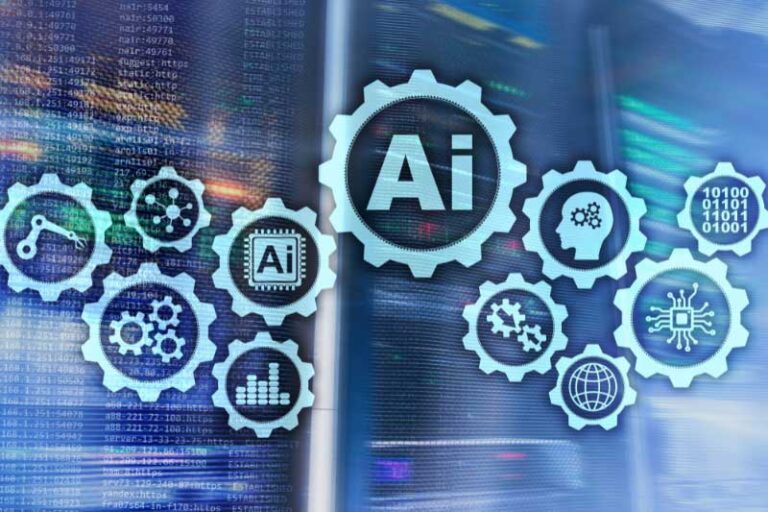Explore the latest renewable energy technologies and how they can power a sustainable future. Learn more and join the green revolution now! Imagine a world where energy is clean, limitless, and sustainable. The future of renewable energy technologies holds this promise, and it’s closer than you might think. This blog post explores cutting-edge advancements in renewable energy, offering insights into how these technologies reshape our world. If you’re a business leader, environmental enthusiast, or simply curious about the future of energy, read on to discover the innovations driving this exciting transformation.
The Rise of Solar Power
Solar Panels Get Smarter
Solar power has come a long way from bulky rooftop panels. Today’s solar technology is smarter, more efficient, and more accessible. Innovations like bifacial panels capture sunlight on both sides, increasing energy production without additional space requirements. Additionally, solar tracking systems adjust the angle of panels to follow the sun, maximizing energy capture throughout the day.
Transparent Solar Cells
Imagine windows that generate electricity. Transparent solar cells make this a reality. These cells can be integrated into building materials, transforming skyscrapers into vertical power plants. This saves space and makes urban environments sustainable energy producers without altering aesthetics.
Community Solar Projects
Solar power isn’t just for homeowners anymore. Community solar projects allow multiple stakeholders to invest in shared solar farms. This democratizes access to renewable energy, reducing costs and making solar power a viable option for apartments and communities previously unable to install panels.
Advancements in Wind Energy
Offshore Wind Farms
Wind energy is no longer confined to land-based turbines. Offshore wind farms harness the powerful, consistent winds over oceans. Due to higher wind speeds, these farms can generate more energy and suffer less from visual and noise pollution. Recent projects in the North Sea and off the coast of Massachusetts are pioneering this technology, showcasing its potential to meet large-scale energy demands.
Vertical Axis Wind Turbines
Traditional wind turbines are gargantuan structures with horizontal blades. Vertical axis wind turbines (VAWTs) offer a more compact alternative. These turbines can operate in various wind conditions and suit urban environments. Their smaller footprint allows for installation in places where traditional turbines wouldn’t fit, expanding the reach of wind energy.
Wind Energy Storage Solutions
One of the main challenges of wind energy is storage. Innovative solutions like flywheel energy storage systems and advanced batteries are making it easier to store wind-generated power. These technologies ensure a stable energy supply, even when the wind isn’t blowing, addressing one of the key limitations of wind energy.
Innovations in Hydropower
Small-Scale Hydropower Systems
Hydropower isn’t limited to massive dams anymore. Small-scale hydropower systems can generate electricity from minor water flows, such as rivers and streams. These systems are less invasive to the environment and can provide power to remote communities without significant infrastructure changes.
Ocean Energy Harvesting
The ocean is a vast, untapped resource for energy. Technologies like tidal and wave energy converters are beginning to harness this potential. Tidal energy leverages the predictable movement of tides to generate power, while wave energy converters utilize the constant motion of ocean waves. Both methods offer reliable and consistent energy sources.
Pumped-Storage Hydropower
Pumped-storage hydropower is a form of energy storage that uses two water reservoirs at different elevations. During low energy demand, water is pumped to the higher reservoir. When demand increases, the stored water is released to generate electricity. This method provides a way to store and balance energy supply, making it a crucial component of a renewable energy grid.
The Role of Biomass Energy
Advanced Biomass Conversion Technologies
Biomass energy has evolved beyond burning wood. Advanced conversion technologies like anaerobic digestion and gasification turn organic waste into valuable energy sources. These methods reduce waste and produce cleaner energy compared to traditional biomass techniques.
Algae Biofuels
Algae is emerging as a potent source of biofuel. Algae can be grown in various environments, including wastewater, and produces high yields of oil that can be converted into biodiesel. This makes algae biofuels a sustainable and efficient alternative to fossil fuels.
Integration with Agriculture
Biomass energy can be integrated with agriculture, turning farm waste into energy. This provides farmers with an additional income stream and reduces waste and emissions. Technologies like biogas digesters can convert animal manure and crop residues into biogas, which can be used for heating, electricity, or vehicle fuel.
Emerging Technologies in Geothermal Energy
Enhanced Geothermal Systems (EGS)
Traditional geothermal energy relies on naturally occurring heat reservoirs, limiting availability. Enhanced geothermal systems (EGS) create artificial reservoirs by injecting water into hot rock formations. This expands the potential of geothermal energy to areas without natural reservoirs, making it a more versatile energy source.
Geothermal Heat Pumps
Geothermal heat pumps are revolutionizing heating and cooling systems for buildings. These pumps use the stable temperatures below the Earth’s surface to provide efficient climate control. They are more energy-efficient than conventional HVAC systems and can significantly reduce energy consumption in homes and businesses.
Co-Production Opportunities
Geothermal energy isn’t just for electricity. Co-production technologies allow the simultaneous extraction of heat and valuable minerals from geothermal fluids. This dual-use approach increases the economic viability of geothermal projects, offering multiple revenue streams from a single resource.
Smart Grids and Renewable Energy
The Importance of Smart Grids
Smart grids are essential for integrating renewable energy into our existing power systems. They use advanced communication and automation technologies to monitor and manage energy flow, ensuring a balanced and reliable energy supply, even with renewable sources’ variable nature.
Demand Response Programs
Demand response programs enable consumers to adjust their energy usage during peak times, reducing strain on the grid. Smart grids facilitate these programs and can include incentives for consumers who reduce their consumption, promoting energy efficiency and stability.
Energy Internet of Things (IoT)
The Energy IoT connects devices and systems within the energy grid, allowing real-time data collection and management. This connectivity enhances the grid’s efficiency and responsiveness, making incorporating diverse renewable energy sources easier and optimizing their use.
The Future of Renewable Energy Storage
Advances in Battery Technology
Battery technology is critical for storing renewable energy. Innovations like solid-state and flow batteries offer higher energy densities and longer lifespans than traditional lithium-ion batteries. These advancements make storing and using renewable energy easier, even when production is intermittent.
Hydrogen Storage Solutions
Hydrogen is emerging as a versatile energy storage solution. Excess renewable energy can be used to produce hydrogen through electrolysis. This hydrogen can then be stored and used to generate electricity, power vehicles, or even provide heating, offering a flexible and sustainable energy storage option.
Flywheel Energy Storage
Flywheel energy storage systems store energy kinetically by spinning a rotor. When energy is needed, the rotor’s kinetic energy is converted back into electrical power. Flywheels offer rapid response times and long lifespans, making them ideal for balancing supply and demand in renewable energy systems.
Policy and Economic Factors
Government Incentives
Government policies and incentives play a crucial role in adopting renewable energy. Tax credits, grants, and subsidies can reduce the initial costs of renewable energy projects, making them more attractive to investors and developers. Policies that mandate renewable energy usage or provide long-term price guarantees also drive growth in this sector.
Economic Benefits of Renewable Energy
Renewable energy projects create jobs, stimulate local economies, and reduce energy costs in the long term. Investments in renewable energy infrastructure can lead to economic growth, energy independence, and a more resilient energy grid. The shift to renewable energy also reduces healthcare costs by decreasing pollution-related illnesses.
Global Collaboration
International collaboration is essential for the advancement of renewable energy technologies. Sharing knowledge, resources, and best practices can accelerate innovation and deployment. Organizations like the International Renewable Energy Agency (IRENA) facilitate global cooperation, helping countries achieve their renewable energy goals.
Conclusion
The future of renewable energy technologies is bright and full of promise. Innovations are transforming how we produce and consume energy from solar panels and wind turbines to geothermal systems and smart grids. These advancements offer environmental benefits, economic opportunities, and enhanced energy security. As we continue to invest in and develop these technologies, we move closer to a sustainable and prosperous future.
For those eager to stay ahead of the curve, now is the time to explore and integrate renewable energy into your operations. Stay informed, get involved, and be part of the renewable energy revolution. Together, we can harness the power of tomorrow’s technologies today.












